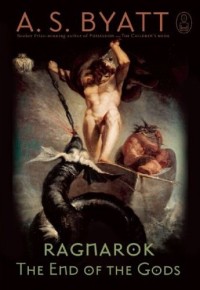The Lost Saints of Tennessee by Amy Franklin-Willis
 Tuesday, February 7, 2012 at 7:50PM
Tuesday, February 7, 2012 at 7:50PM 
Published by Atlantic Monthly Press on February 7, 2012
In 1985, Ezekial Cooper is 42 and sufficiently depressed about his failed life to contemplate ending it. Having dropped out of the college life he loved and its promise of a rewarding future, Zeke returned to grunt work near his hometown in Tennessee. Years later, Zeke is experiencing something more serious than a midlife crisis. His ex-wife, Jackie, has recently remarried. He feels distant from his daughters. His mother has lung cancer. His twin brother Carter is nearly ten years dead and Zeke can't recover from the loss -- he wonders "how can there be me without him?" To show us why Zeke's life has gone so terribly wrong, Amy Franklin-Willis takes the story back to 1946, introducing Zeke and Carter as children. The story then alternates between past and present.
The chapters outlining Zeke's past focus on his relationship with Jackie and Carter. Zeke is bright enough to win a scholarship to UVA, which his mother pressures him to accept for her own vicarious pleasure, even though Zeke would be more comfortable attending UT. Carter is slow; he won't make it past eighth grade. Part one reveals little else about the past.
The 1985 Zeke is so in love with his old mangy dog Tucker that he's an easy character to like. His sister Rosie is equally easy to like: she's perceptive and sassy (his other sister is less endearing). Zeke's elderly cousin Georgia and her husband Osborne are hard-working and kind-hearted, although Osborne's poor health is affecting his behavior. Zeke eventually embarks on a trip to their Virginia home, where he stayed while attending UVA, a time when "life offered a thousand possible destinations." Journeying toward self-awareness by escaping to the past is a novelistic convention that's been done to death, but Willis offers a fresh take on a familiar plot.
The reader learns more about Carter in part two, which is told from the perspective of Zeke's dying mother Lillian, a woman who has experienced more than enough trouble to fill two lifetimes. Her tale of regret is often told in fiction: childhood dreams pushed aside by the consequences of poor choices, the burden of unwanted responsibilities, coping mechanisms that lead to equal parts of relief and grief, self-assigned guilt for tragedies beyond her control. Like her son, Lillian is ready to die. Her story is written in a distinctive voice that sets it apart from Zeke's, but -- perhaps because it lacks the immediacy of part one -- I found it less compelling.
Part two is merely a lengthy interlude, however, as part three returns the focus to Zeke. The novel has by that point lost some of its momentum, and the story of Zeke's present has lost some of its urgency, as well. The story of his past moves to the forefront in part three. It is dramatic and occasionally gut-wrenching. The flashbacks to Zeke's college years give meaningful context to Zeke's present. By the time the story brings us back to the present, when Zeke's potential new love interest (Elle) tells Zeke that "everybody's got a closet full of hurt tucked away somewhere," we are close to understanding the contents of Zeke's closet; we understand why Zeke might be just as incapable of growing his love for Elle as he was of sustaining his love for Jackie. We also understand why he rejects his mother's love, why he tells her "The way you love is like sucking all the air out of a person's lungs and then telling him you'll breathe for him."
The story of Zeke's present eventually turns into a fairly conventional portrayal of a man confronting (and coming to terms with) the demons that have tormented him for most of his adult life. The emotions displayed by Zeke and his family members come across as honest, the story isn't overtly manipulative or weepy, but it's the sort of family drama that has been written many times before. The novel builds to a climax -- the revelation of what really happened on the day Carter died -- that disappointed me; it isn't much of a revelation, and it certainly isn't climactic. Given the buildup, I expected a more powerful finish. It all wraps up too neatly and all the warm fuzziness in the last chapters is a bit much. For its strong characters and high points, this is a novel I recommend, but given its weak ending, I wouldn't put it at the top of anyone's reading list.
RECOMMENDED



